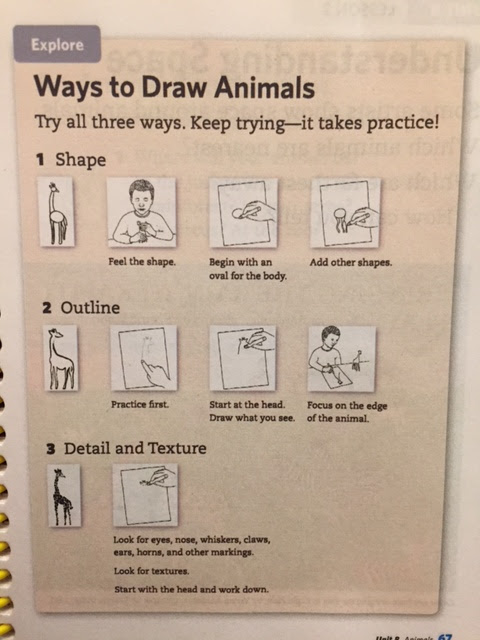People have been making art about animals for a very long time.
This painting of animals was found in a cave in Lascaux, France. It is thousands of years old.
Why do you think people painted these images on cave walls?
Today, animals are still a favorite subject of artists.
Alejandro Raineri
Can you tell what animal this is? What are some of the clues?
The SHAPE APPROACH to drawing animals:
1. Close your eyes, feel the shape of your animal.
2. Draw the basic shapes you feel.
3. Begin with an oval for the body.
4. Next add the head, neck, tail, face and details
The OUTLINE or CONTOUR APPROACH to drawing animals:
1. Look closely at your animal
2. Begin at the top of your animal's head.
3. Keep your eyes on the animal, and let your pencil move as your eyes move along with the edge of the shape of the animal. Sometimes it helps to keep your place on your animal with your finger as you look and draw.
The DETAIL AND TEXTURE APPROACH:
1. Begin by drawing only the details of the eyes, nose, mouth, ears, --anything on the head and face.
2. Next draw textures--lines and shapes
3. Work your way down to the feet and tail. This works best with animals that have patterned markings or long fur such as a cheetah or bears.
Encourage early finishers to draw a front, top, side, or back view of his or her animal while waiting.
Reflection/Share Time:
What approach was your favorite? (Thumbs up thumbs down)
Did you combine approaches?
Do you have your own approach to drawing animals?









